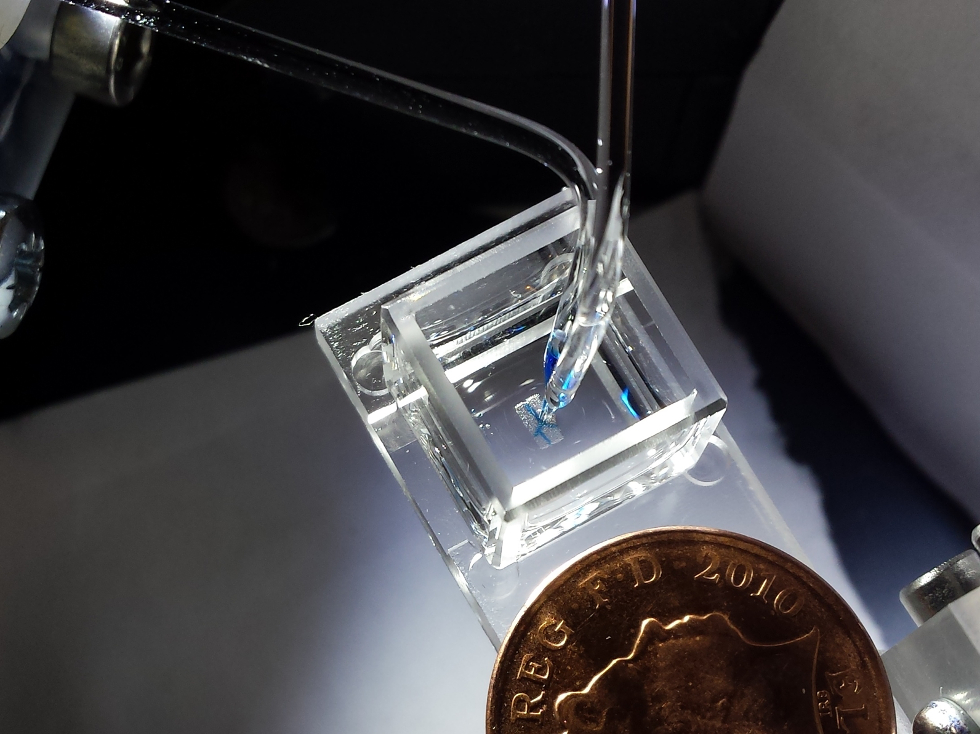
The new technique could enable the production of complex tissues and cartilage that would potentially support, repair or augment diseased and damaged areas of the body.
In research published in Scientific Reports, an interdisciplinary team from the Department of Chemistry and the Department of Physiology, Anatomy and Genetics at Oxford University and the Centre for Molecular Medicine at Bristol University, demonstrated how human and animal cells can be printed into high-resolution tissue constructs.
Developing an effective way to 3D-print living tissues has so far proven difficult, particularly since accurately controlling the position of cells in 3D is problematic.
According to Oxford University, the cells often move within printed structures and the soft scaffolding printed to support the cells can collapse on itself. Consequently, it remains a challenge to print high-resolution living tissues.
Now, Prof Hagan Bayley, Professor of Chemical Biology in Oxford’s Department of Chemistry, has led a team that devised a way to produce tissues in self-contained cells that support the structures to keep their shape.
The cells were contained within protective nanolitre droplets wrapped in a lipid coating that could be assembled in layers into living structures. Producing printed tissues in this way improves the survival rate of the individual cells, and allowed the team to improve on current techniques by building each tissue one drop at a time to a more favourable resolution.
To be useful, artificial tissues need to be able to mimic the behaviours and functions of the human body. The method is said to enable the fabrication of patterned cellular constructs, which, once fully grown, mimic or potentially enhance natural tissues.

Dr Alexander Graham, lead author and 3D Bioprinting Scientist at OxSyBio (Oxford Synthetic Biology), said: ‘We were aiming to fabricate three-dimensional living tissues that could display the basic behaviours and physiology found in natural organisms.
“To date, there are limited examples of printed tissues which have the complex cellular architecture of native tissues. Hence, we focused on designing a high-resolution cell printing platform, from relatively inexpensive components, that could be used to reproducibly produce artificial tissues with appropriate complexity from a range of cells including stem cells.”
With further development, the materials could have a wide impact on healthcare worldwide. Potential applications include shaping reproducible human tissue models that could remove the need for clinical animal testing.
The team completed their research last year, and are working on commercialising the technique and making it more widely available. In January 2016, OxSyBio officially spun-out from the Bayley Lab. The company aims to commercialise the technique for industrial and biomedical purposes.
The team will now work on developing new complementary printing techniques, that allow the use of a wider range of living and hybrid materials, to produce tissues at industrial scale.
Dr Sam Olof, CTO at OxSyBio, said: “There are many potential applications for bioprinting and we believe it will be possible to create personalised treatments by using cells sourced from patients to mimic or enhance natural tissue function. In the future, 3D bio-printed tissues could maybe also be used for diagnostic applications – for example, for drug or toxin screening.”





April 1886: the Brunkebergs tunnel
First ever example of a ground source heat pump?